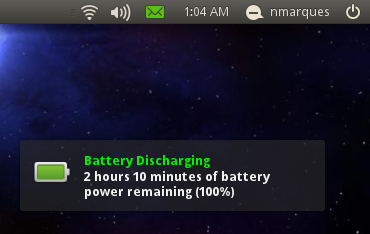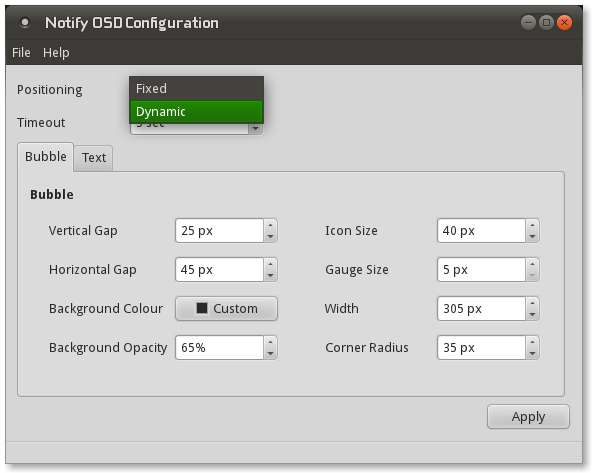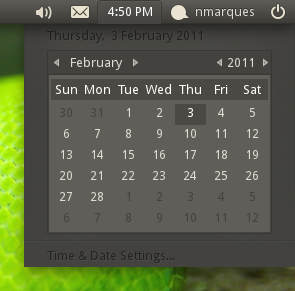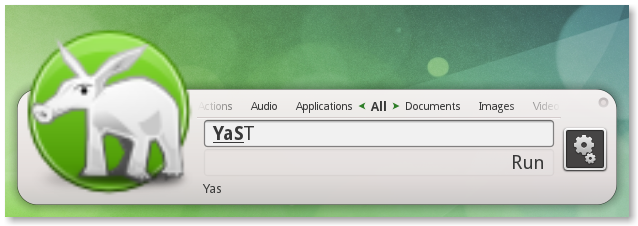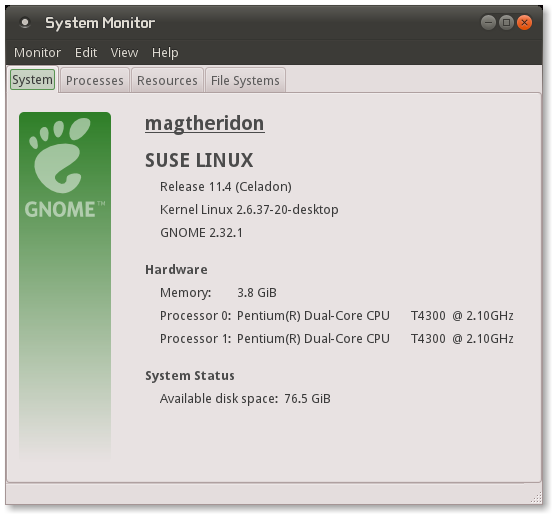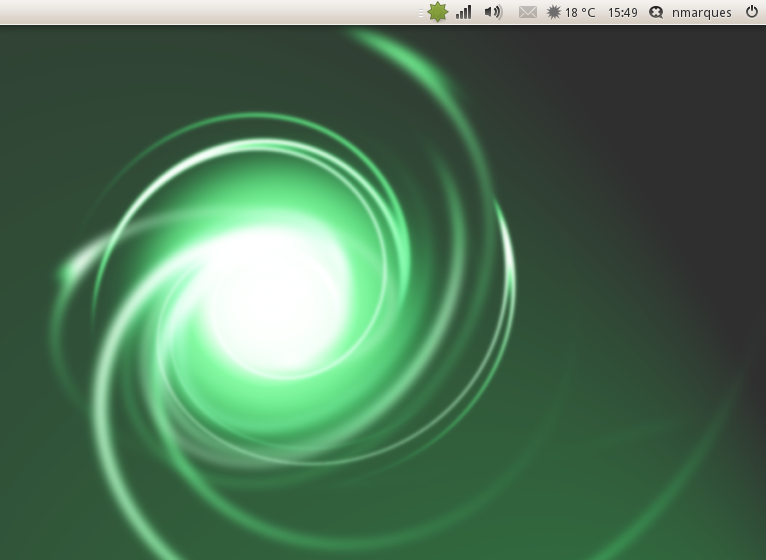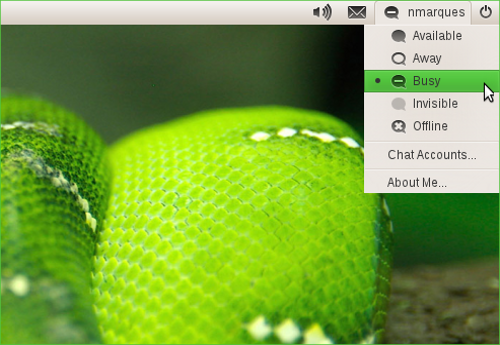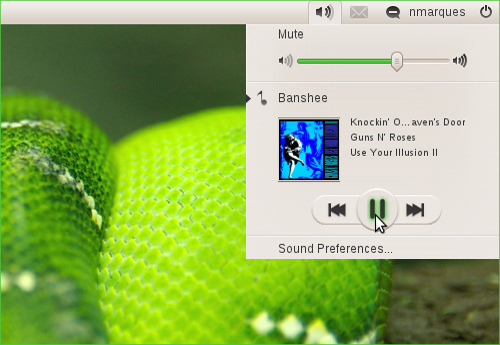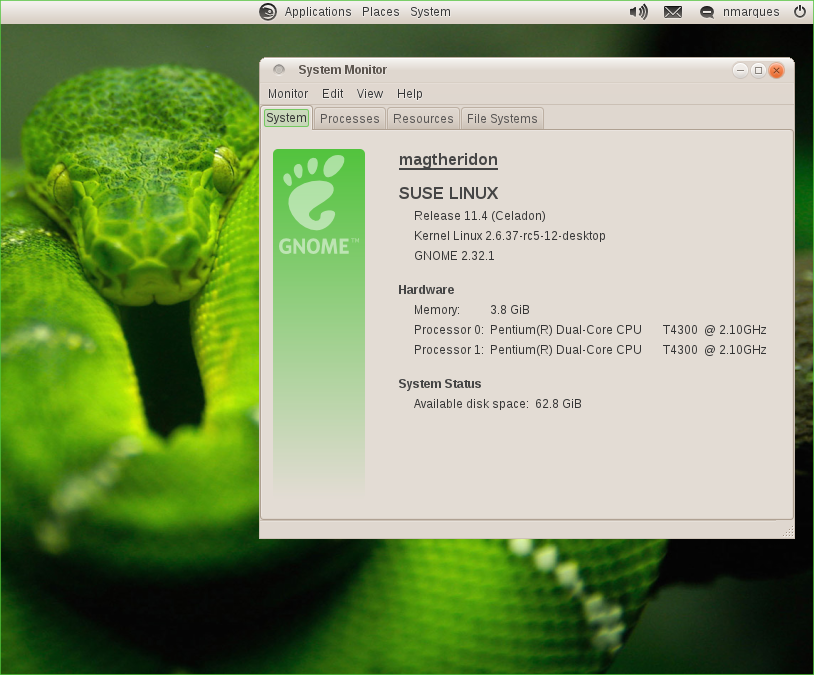Canonical has been very active and released quite an impressive amount of bug fixes and features for their Ayatana Project software. I’ve been doing the updates, sent a couple of tiny patches upstream (mainly packaging issues) and with the RC1, I am very happy with the results accomplished.
Regarding this project, I’ve seen news, blog posts and lots of feedback from several distribution users. I’ve found contents in German, Portuguese (Brazilian Portuguese), English, Russian and Spanish. For the most I believe everyone is happy this is happening.
During the next week, I’m going to conduct an open-beta for the GNOME2 indicators from which I hope to get some feedback and improve things so that once openSUSE 11.4 is release, those users willing to use this software can do it safely, and off course in an openSUSE way, a rock solid and featured GNOME experience.
I’ve created a pattern which will duplicated in the GNOME:Ayatana repository named ‘gnome2-indicators’ which will install the 5 base indicators on Ubuntu Natty. About this indicators and some previous comments that I’ve seen online, I would like to clarify a couple of things:
* All the software is built on top of ‘openSUSE stack’, so we’re not really converting Ubuntu to RPM’s.
* The patch level applied from Ubuntu is minimum, only the mandatory feature patches were applied on pure openSUSE stack. Some of this features weren’t upstreamed, while others were turned down, so GNOME:Ayatana will also provide the modified software required, this is the case of GTK+ (2.0) which is properly tested and no issues were found against the regular GTK+ stack on 11.4.
* I’ve patched and built applications like Metacity, Empathy and gnome-session to enable functionality with the Indicators. I’m also serving this patched versions through GNOME:Ayatana, without them, there wouldn’t really be a pleasant indicator experience for openSUSE users. I would love to see community contributions to GNOME:Ayatana for all of those that aren’t available yet. Don’t be shy, we don’t bite! (A big plus is that you can actually learn a lot, and the openSUSE GNOME Team is very friendly and helpful. If you really want to help and improve yourself, step forward!.
Now for real… what does the GNOME2 Indicator pattern offers?
1. A 99% working Session Indicator, from where users can perform several session related tasks (ex: logout, restart, switch users, hibernate, etc). The only feature I know it’s not present is the “restart/relog” option after software updates. If anyone want to work this indicator to work with PackageKit / YaST or zypper, would be probably a big plus and significative contribution to openSUSE and upstream.
2. The ME Menu, which appears to be fully functional.
3. A simple clock indicator. This indicator is under very active development, and displays a simple calendar/clock with options to manage appointments (through Evolution). The ‘date/time’ configurations are disabled because on openSUSE we use YaST for it. Except for this, everything seems to be working.
4. Sound Menu indicator… the (in)famous Sound indicator from Ubuntu, which displays an horizontal slide bar for sound volume management and fully integrates with Banshee. Since I’m recent convert to Banshee from Totem because of the development of this project, I’ve also packaged and made available from GNOME:Ayatana two extensions:
* banshee-extension-soundmenu – Enables integration with soundmenu, really a plus/must if Banshee is your preferred multimedia player;
* banshee-extension-indicator – A Banshee indicator. I’ve only really packaged this because it offers integration with Notify OSD, the indicator itself is less featured than the traditional gnome extension.
5. The Messaging Menu – Another controversial indicator… Currently it’s working with Empathy (patched with libindicate on GNOME:Ayatana), xchat, evolution and gwibber. Other applications like pidgin are known to work up to a certain point. This indicator grabs any incoming messaging and alerts the user for it. It’s not really that bad once you get used to it (takes a couple of hours).
Additionally to this, Notify OSD is also available for openSUSE 11.4, and doesn’t require any extra repository. openSUSE 11.4 ships with a version of Notify OSD that allows the user to skin/theme it in several ways. This behavior isn’t enabled on Ubuntu and relies on a patched refused by upstream by Roman Sokuchev. The development project for this package is GNOME:Apps, and my thanks to Vincent Untz and Dominique L. for helping with the process.
During next week, GNOME:Ayatana will be populated and a free open BETA will be start to gather feedback amongst our users.
A side note… Yesterday an update for Sound Menu was issued by Canonical and it deeply relies on libnotify >= 0.7.0. openSUSE 11.4 will ship with libnotify 0.6.0 and therefore I’m not committing more changes to Sound Menu and will only fix critical issues if found for this package.
After openSUSE 11.4 is released, I’ll start working on implementing this for GNOME3, and hopefully now I will have enough time to try to push them to Factory for openSUSE 12 (or whatever it will be called).
Contributions are accepted in any area not covered by me, or fixing stuff, and also very important, in the KDE field. About Unity… here’s a riddle: “How can you tell if a ghost is about to faint?”.
nmarques.

